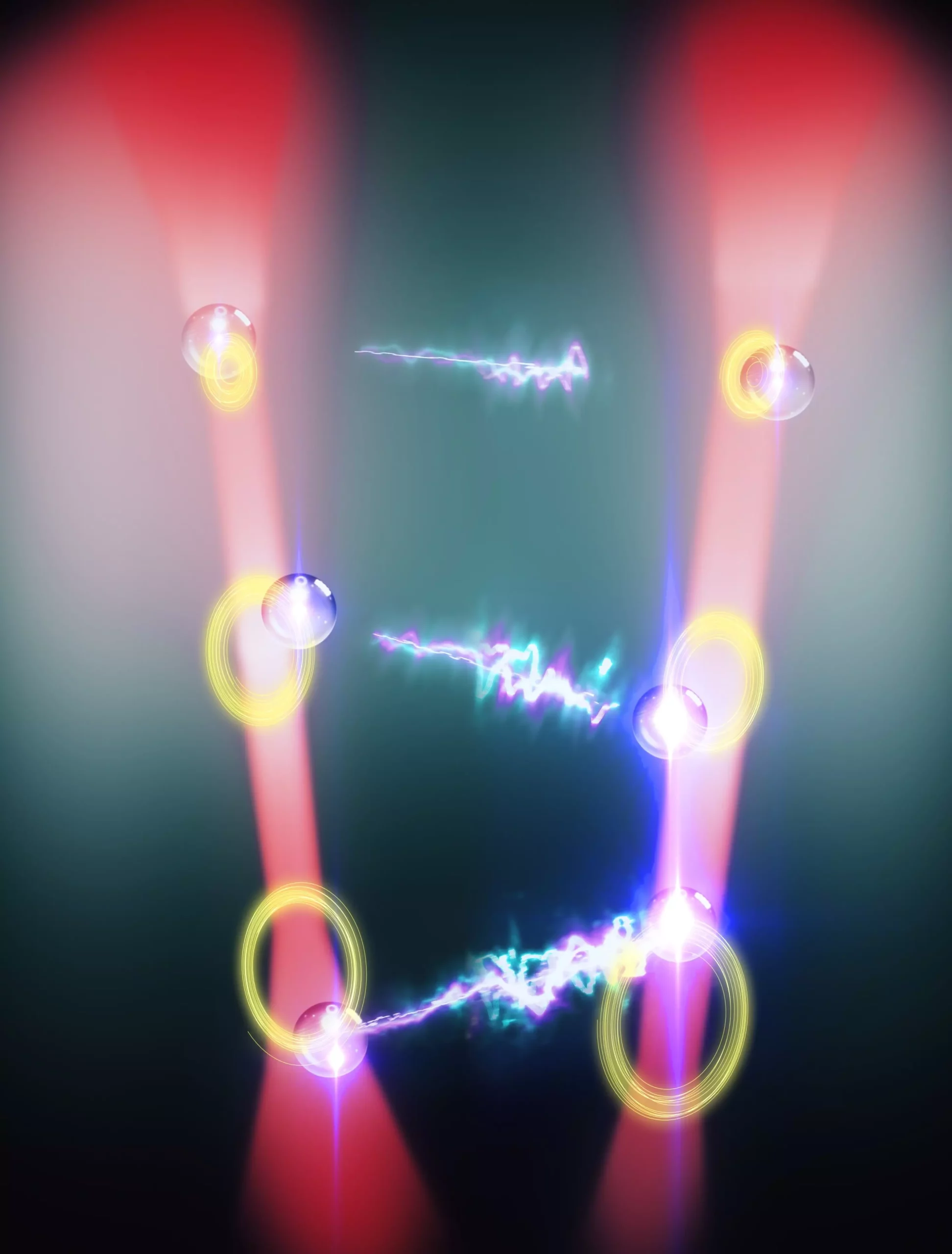In the realm of quantum mechanics, the exploration of complex interactions governs our understanding of physical systems. A recent groundbreaking study has advanced the field by observing unique collective dynamics, specifically within non-Hermitian and non-linear frameworks, driven by non-reciprocal interactions. By utilizing two optically-trapped glass nanoparticles, researchers have shattered traditional barriers of optical manipulation, paving a path for innovative applications in sensing and quantum systems. This leap forward not only broadens the scope of optical levitation techniques but also invites a deeper inquiry into the intricate dance of forces shaping our universe.
The Essence of Non-Reciprocal Interactions
At the core of this study lies the concept of non-reciprocity—wherein interactions are not symmetrically mirrored. In nature, many processes echo this imbalance, such as predator-prey relationships, where the predator seeks to capture, while the prey strives to evade capture. This non-reciprocal behavior defies conventional notions of attraction and repulsion that characterize fundamental forces like gravity. By delving into non-Hermitian dynamics, scientists encapsulate the subtleties of these interactions, incorporating effects like dissipation and gain that are often overlooked in more straightforward analyses.
The significance of this study extends beyond theoretical musings. By grounding their findings in a rigorous analytical model birthed from collaboration with respected institutions like Ulm University and the University of Duisburg-Essen, the researchers have anchored this complex interaction within observable phenomena. Their work has potential applications in a variety of promising fields, defining a new frontier in non-reciprocal systems.
Innovative Experimental Design
The experiment, spearheaded by Uroš Delić and his team at the University of Vienna, embodies a creative melding of physics and technology. Employing optical tweezers—a technique majorly popularized by Arthur Ashkin’s Nobel-winning work—the researchers crafted a scenario where two glass nanoparticles engaged in a dynamic interaction reminiscent of the predator-prey metaphor. This experimental setup is not only elegant but also illustratively powerful. What makes this endeavor remarkable is the ability to manipulate the nanoparticles’ behavior through programmability, akin to directing a computer game.
Through meticulous adjustments to the laser beam phases and the inter-particle distance, the team was able to control their interactions with precision. This dynamic tuning led to the emergence of constructive and destructive interference patterns around the individual particles, generating a feedback loop that mirrored a chase-and-escape scenario. It’s a captivating demonstration of how fractions of movement can create magnified influences, fundamentally altering each particle’s motion as they become enmeshed in this non-reciprocal relationship.
The Complex Interplay of Forces
Once interactions were introduced, the once independent motions of the nanoparticles began to synchronize in remarkable and non-linear fashion, likened to swings in motion. The light beams supported a framework where these swings echoed each other’s movements, disrupting the conventional principles of parity-time reversal symmetry. Observing this phenomenon reveals the hidden potential and complexity of non-reciprocal forces, shedding light on how such dynamics could be utilized to emulate natural phenomena in controlled environments.
As Benjamin Stickler from Ulm University articulates, the design reveals a universe of non-linear behaviors similar to systems found across various scientific affairs—including biology, engineering, and even laser physics. Understanding these limit cycles could inform the practical applications of non-reciprocal forces, particularly in force and torque sensing, opening new doors in technological advancement.
Future Implications and Broadening Horizons
The implications of this research are not merely theoretical; they reverberate across the scientific landscape. The promise of translating these non-reciprocal interactions into larger ensembles of particles signifies an exciting trajectory for future studies. As the researchers refine their experimental setup, the potential to observe even more complex dynamics looms on the horizon.
Moreover, the convergence of non-reciprocal interactions with quantum mechanics could redefine the paradigms of what we perceive as few-body quantum systems. By integrating classical manipulation techniques with quantum precision, scholars could dissect the composite nature of particles, elevating our understanding of collective dynamics in quantum realms.
In an era where quantum technology is on the brink of revolution, discoveries such as these not only enrich our knowledge but also serve as a stepping stone towards novel applications that could reshape how we engage with the quantum world. Such advancements inspire an ever-deepening exploration of the fundamental forces that govern our reality, inviting both theoretical inquiry and practical exploration in ways previously unimagined.

